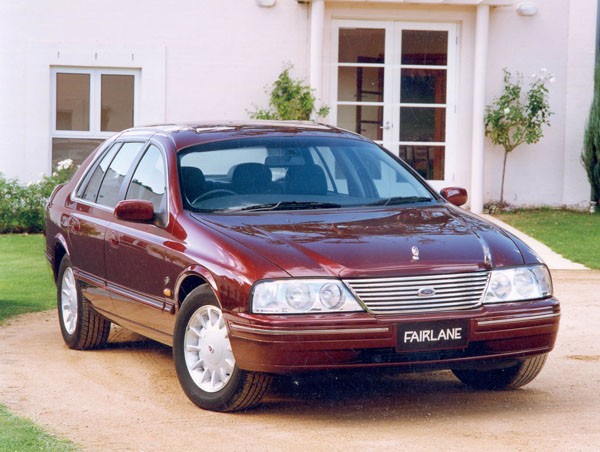Fairlane and LTD are long-wheelbase versions of the Ford Falcon. For decades these super sized Fords had their own specific shape to make them stand out from their shorter – dare we say lesser? – brothers.
However in the early years of the 21st century, Ford Australia decided to save money by having the Fairlane and LTD share most visible body components with the Falcon. Potential buyers didn’t appreciate the looking as though they were driving a Falcon not a more prestigious LTD or Fairlane. They stayed away in droves and the long-wheelbase models tumbled from being kings of their market segment. Sadly, they were discontinued at the end of 2007.
But many still miss these big, easygoing Fords and there are early signs they’re becoming increasingly sought after on the used-car scene than previously. Will this result in an increase in value? Possibly, but that’s not likely to happen for some time. Your call, though…
We have seen some Fairlanes dressed up to look like LTDs, particularly in the older models. If you are in doubt, get in touch with your Ford dealer and quote the VIN (Vehicle Identification Number) for a confirmation.
These big Fords make excellent family cars, particularly if large teenagers are to be carted around. The big Fords are better suited to four occupants than five as the centre-rear seat’s foot-space is compromised by the transmission tunnel.
As all the extra wheelbase has gone into the rear passenger area, the boot space is about the same as that of the Falcon. The boot is quite large, but on the shallow side.
Though they are very large cars, the Fords are reasonably easy to drive. However, they can be out of place on inner-city streets and in tight parking stations.
Ride comfort is excellent and the big Fords really come into their own when they are used on rough-and-ready Aussie country roads. They can actually show the big-name European cars a thing or two when it comes to soaking up harsh surfaces with minimal fuss.
Straight sixes and V8s are offered, with the V8 being the more common in the LTD. The V8 engine scores well for heavy-duty towing, but the six isn’t as far behind as you might anticipate. Many owners love the lazy, easy-going travel only a V8 can provide.
However, the six-cylinder powerplant is often the better choice unless you are a revhead, as it has been significantly upgraded over the years and doesn’t lag all that far behind the V8.
Engine size on the six-cylinder is 4.0 litres. This legendary straight six was improved many times over the years.
The V8 had a capacity of 5.0 litres until the launch of the BA series in 2003, when an all-new design went up to 5.4 litres. The newer engine is far better than its predecessor, both in performance and economy – though not in character, the old 5.0-litre is just great fun to sit behind.
A four-speed automatic transmission was used in Fairlanes and LTDs until the BF facelift of 2005 introduced a six-speed unit. The six-speed combines good off-the-line acceleration with a lazy, mile-eating high-ratio sixth gear and is certainly the one to aim for.
The big Fords are relatively easy for the knowledgeable amateur to work on, though some of the luxury extras will need a professional operator.
Spare parts are reasonable in price and there are dealers in virtually all areas of the continent.
Insurance costs are low and don’t seem to vary by huge amounts from insurer to insurer.
WHAT TO LOOK FOR
Earlier Fairlanes and LTDs weren’t particularly well built. Look and feel for parts that don’t fit correctly, or rattle and squeak on bumpy roads.
Later cars are much better, but can still have had a hard life so still require a full inspection.
Don’t forget to check the rear seat area as carefully as you do the front. These cars generally get a fair bit of use back there. All the more so if a Fairlane or LTD has been a taxi at one stage in its career.
Engines should start within a couple of seconds even when cold and should have a smooth idle straight away.
Look for smoke from the exhaust, this will at its most obvious when the accelerator is floored quickly, and feel for any hesitation under acceleration.
Make sure the automatic transmission isn’t hesitant about going into gear from Park or Neutral and doesn’t make unnecessary changes.
Listen for a whine from the differential at moderate urban speeds and when cruising at about 100 km/h to 120 km/h on the open road. It’s usually most obvious when you lift gently on and off the throttle a few times.
Check the body for signs of rust, these days this is only likely to be present if previous crash damage hasn’t been done correctly.
CAR BUYING TIP
Sounds like very basic advice – but never buy a car without having a full inspection from someone qualified to do it.
